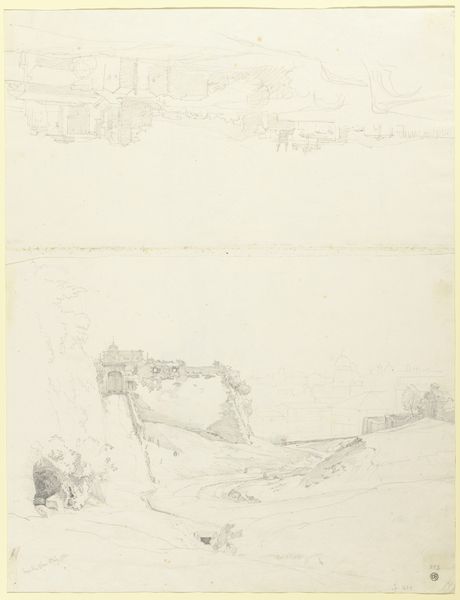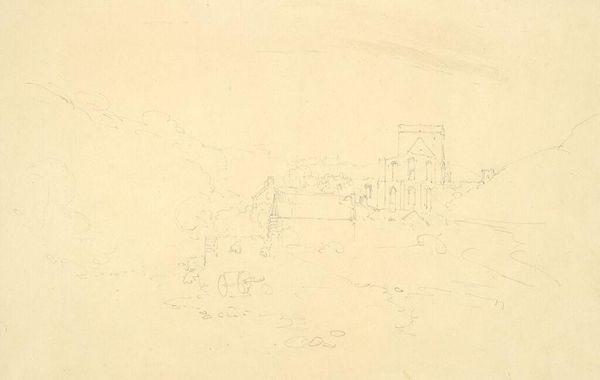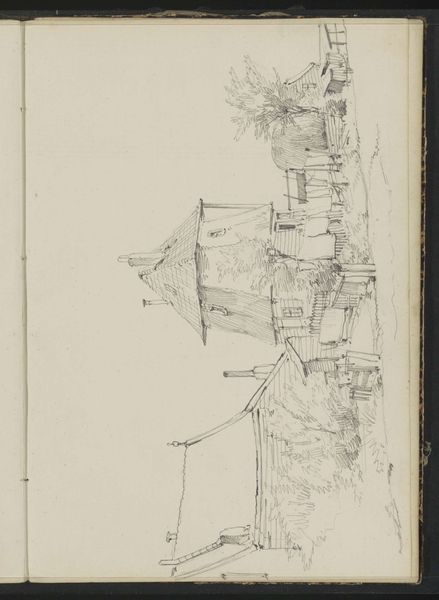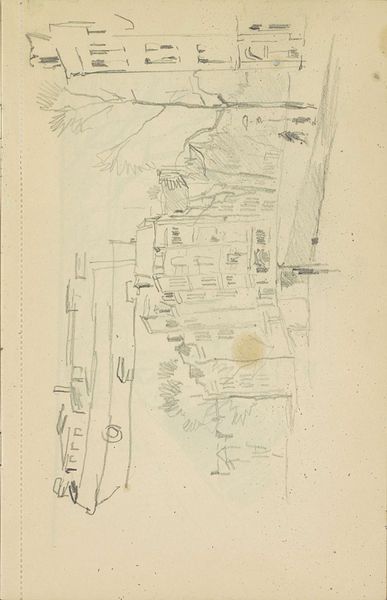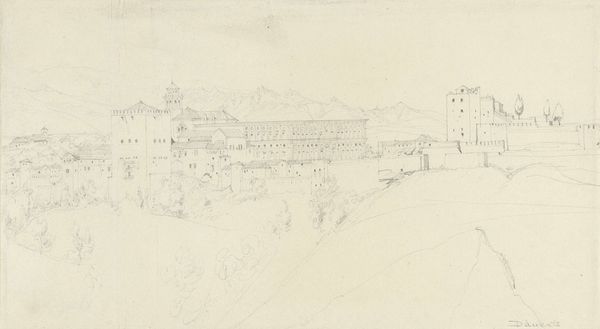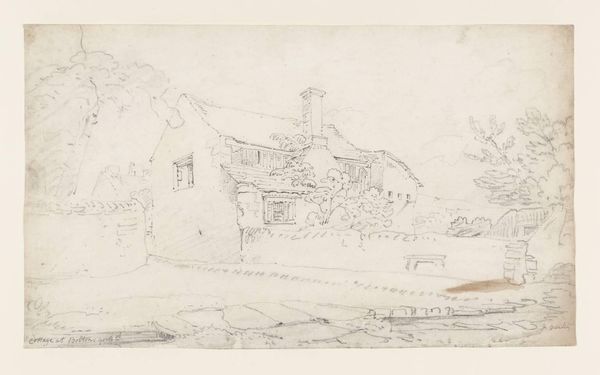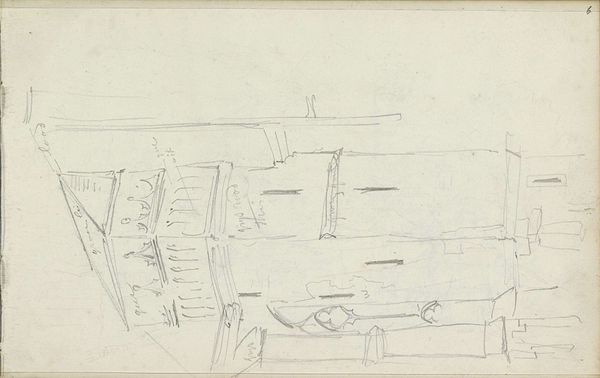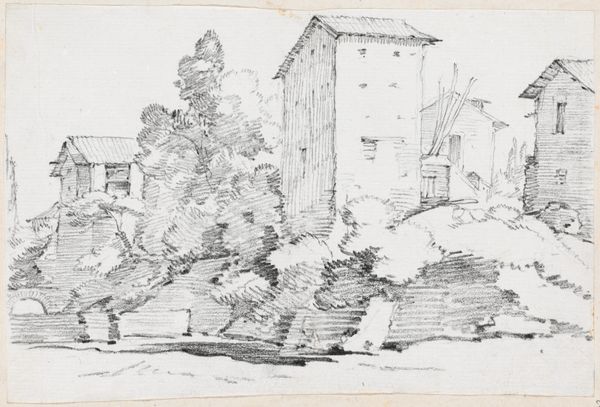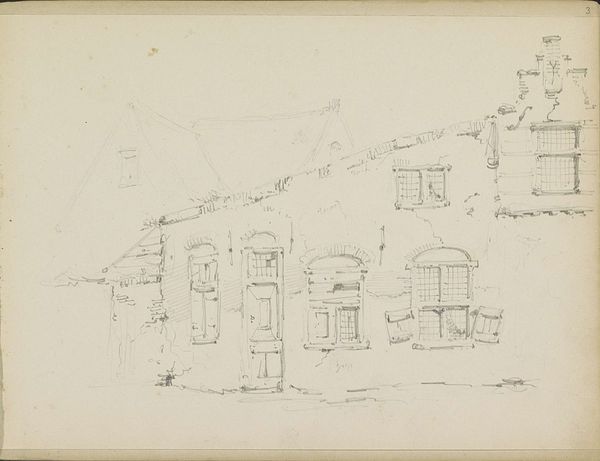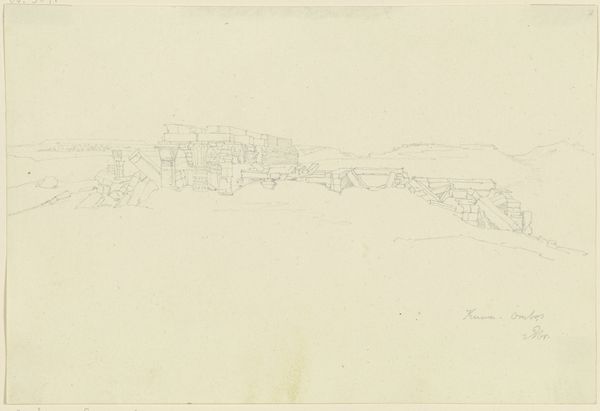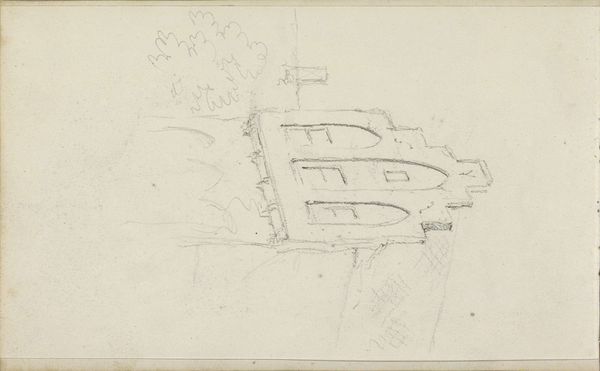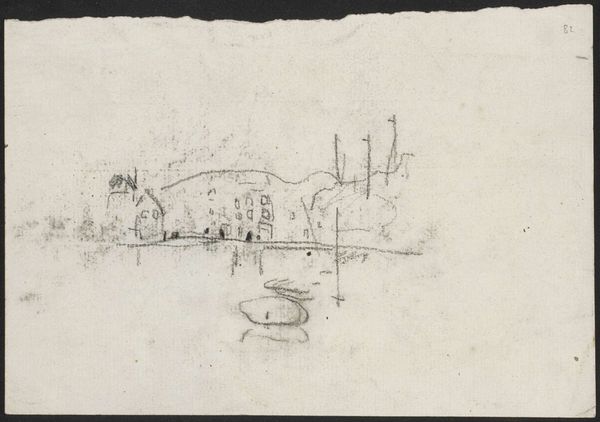
Udsigt over Roms tage med kirken San Andrea delle Fratte 1798 - 1854
0:00
0:00
drawing, pencil
#
drawing
#
landscape
#
pencil
#
cityscape
#
realism
Dimensions: 211 mm (height) x 316 mm (width) (bladmaal)
Curator: This subtle pencil drawing by Ditlev Blunck, dating from between 1798 and 1854, offers us a rooftop vista titled "View Over the Roofs of Rome with the Church of San Andrea delle Fratte." Editor: It possesses a delicate quality, almost ethereal. The light seems to diffuse, softening the hard edges of the architecture. One can feel the weight of history just in its gentle atmospheric perspective, with the composition’s simple lines. Curator: Indeed. Considering the period, such landscapes held cultural value. The city of Rome represented a seat of power. Artists and intellectuals gathered there to explore humanistic traditions and grand architecture. A depiction like this aligns with the Romantic and Realist movements emerging at the time. Blunck engages not in heroic portrayals of Rome's elite, but of its architectural fabric and layout. Editor: And, focusing on purely formal aspects, one has to admire Blunck’s precise layering and the intricate detailing within the seemingly simple sketch. He establishes depth through very delicate shading and creates a play with various angular geometric forms and textures. He directs the eye towards the Church, an intentional pivot that contrasts beautifully with the rough texture of the roof tiles. Curator: Precisely. It gives us a peek into the urban planning, even a proto-photographic capture of a streetscape that diverges from, say, a Renaissance approach that might emphasize symbolic grandeur. You can infer elements about daily life; where the inhabitants live. Editor: It brings to question the very notion of landscape art at this time, then, too. If this cityscape is also meant to serve as an expression of history, of realism, then what meaning did it convey? For whom was it made? What specific statements can this artwork convey on an economic, class, and power relation at this time? It’s as if the artist is allowing the architecture to speak, silently witnessing the passage of time. Curator: Exactly. Viewing it this way certainly helps in reading it from the perspective of our current historical context and it truly enriches our understanding. Editor: A worthwhile point. I must admit, observing its visual rhythm and soft, diffused values creates a meditative experience as well.
Comments
No comments
Be the first to comment and join the conversation on the ultimate creative platform.

